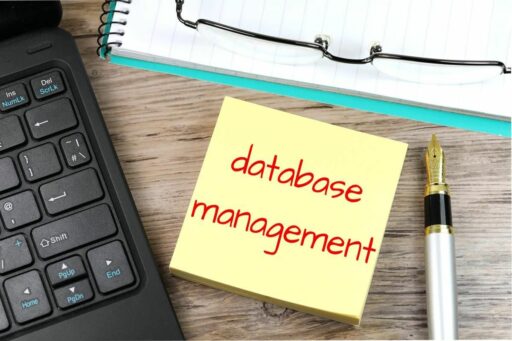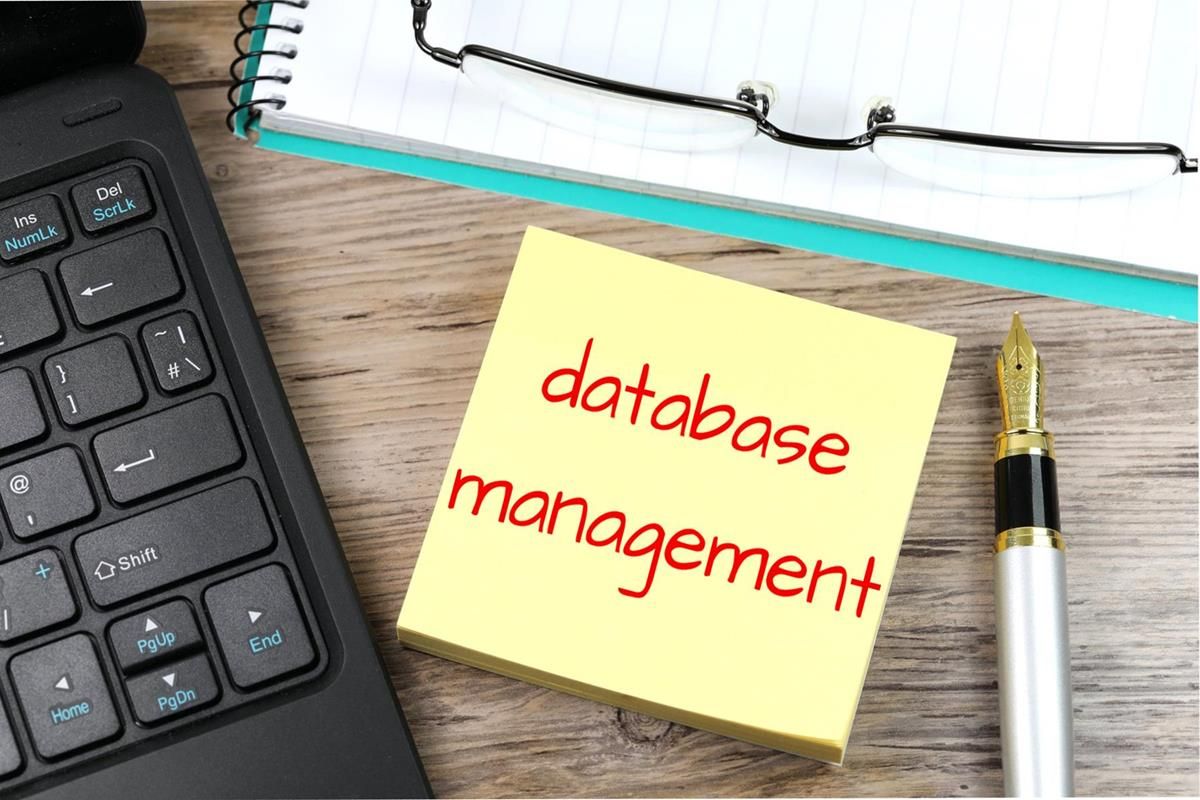Table of Contents
Data Lifecycle Management (DLM) is a crucial process that involves the collection, storage, processing, and maintenance of data throughout its lifecycle. Understanding the triad of objectives in DLM is essential for ensuring data quality, security, and governance. In this article, we will explore key aspects of Data Lifecycle Management and discuss the key takeaways for each stage of the data lifecycle process.
Key Takeaways
- Data Lifecycle Management involves the stages of Data Collection, Data Storage, and Data Processing, each playing a critical role in managing data effectively.
- Data Quality Assurance in DLM includes processes such as Data Validation, Data Cleansing, and Data Integrity Checks to ensure the accuracy and reliability of data.
- Security Measures in Data Lifecycle Management encompass Access Control Policies, Encryption Protocols, and Data Privacy Compliance to protect data from unauthorized access and breaches.
- A robust Data Governance Framework for DLM consists of Data Ownership Guidelines, Data Retention Policies, and Compliance Regulations to ensure compliance and accountability in data management.
- Understanding the triad of objectives in Data Lifecycle Management is crucial for organizations to effectively manage and utilize data assets for informed decision-making and business success.
Data Lifecycle Management Overview

Data Collection
The initial phase of Data Lifecycle Management (DLM) is data collection, a critical step that sets the foundation for the value that can be extracted from data assets. Effective data collection strategies ensure that the data gathered is relevant, accurate, and collected in a manner that respects privacy and consent.
- Identify the data requirements
- Select appropriate data collection methods
- Ensure ethical data collection practices
- Maintain data provenance and metadata
The quality and granularity of collected data directly influence the subsequent stages of storage, processing, and analysis. It is imperative to establish clear protocols for data collection to avoid costly rectifications later in the DLM process.
Data Storage
In the realm of Data Lifecycle Management, data storage is a critical phase where data is retained in a structured format, ready for future access and analysis. The choice of storage solution can significantly impact the performance, scalability, and cost-effectiveness of data management systems.
- On-premises Storage: Traditional data centers with physical servers.
- Cloud Storage: Services like AWS S3, Azure Blob Storage, or Google Cloud Storage.
- Hybrid Solutions: A combination of on-premises and cloud storage to balance control and flexibility.
Efficient data storage ensures that data remains accessible and secure, while also being cost-effective. It is essential to consider the type of data, frequency of access, and regulatory requirements when selecting a storage solution.
The following table summarizes the key attributes of different storage types:
| Storage Type | Accessibility | Security | Cost |
|---|---|---|---|
| On-premises | High | Variable | High |
| Cloud | Very High | High | Variable |
| Hybrid | High | High | Medium |
Data Processing
Data processing is a critical phase in the Data Lifecycle Management (DLM) where raw data is transformed into meaningful information. Efficient data processing methods are essential for accurate decision-making and strategic planning. This stage involves various operations such as data mining, aggregation, analysis, and summarization.
- Data Mining: Extracting patterns and knowledge from large datasets.
- Aggregation: Combining data from multiple sources to provide a more comprehensive view.
- Analysis: Applying statistical techniques to interpret data and draw conclusions.
- Summarization: Reducing detailed data to its main points for easier understanding.
The goal of data processing is not only to extract insights but also to prepare data for the next stages of its lifecycle, such as reporting, visualization, or further analysis. Ensuring that processed data maintains its quality and integrity is paramount for the reliability of the entire DLM system.
Data Quality Assurance in DLM

Data Validation
Data validation is a critical step in ensuring the quality of data within the lifecycle. It involves checking the accuracy and consistency of data before it is used for analysis or decision-making. Effective data validation can significantly reduce errors and improve the reliability of datasets.
The process of data validation includes a variety of checks, such as:
- Format checks to ensure data is in the correct structure
- Range checks to verify data falls within acceptable parameters
- Consistency checks to confirm data aligns with predefined rules or patterns
By implementing a robust validation framework, organizations can prevent the propagation of corrupt or inaccurate data, which is essential for maintaining the integrity of data-driven processes.
It is important to note that data validation should not be a one-time event but a continuous part of the data management process. This ensures that data remains clean and useful throughout its lifecycle.
Data Cleansing
Data cleansing is a critical step in ensuring the accuracy and usability of data within an organization. It involves the identification and correction of errors and inconsistencies to improve data quality. This process can range from simple tasks, such as removing duplicates and correcting misspellings, to more complex issues like resolving data conflicts and standardizing data formats.
Effective data cleansing often requires a combination of automated tools and manual review. For instance, software can be used to detect anomalies, while human oversight is necessary to determine the context and appropriate corrections. Below is a list of common data cleansing techniques:
- Removing duplicates
- Correcting typographical errors
- Standardizing data entries
- Resolving inconsistencies
- Filling in missing values
Data cleansing not only enhances the reliability of data analytics but also supports better decision-making across the enterprise. By maintaining clean data, organizations can ensure that their information is actionable and trustworthy.
Data Integrity Checks
Ensuring the accuracy and consistency of data is a cornerstone of effective Data Lifecycle Management. Integrity checks are critical validation procedures that play a pivotal role in maintaining the trustworthiness of data throughout its lifecycle.
The following table illustrates a sample of datasets with their respective test names and dates, showcasing the importance of systematic integrity checks:
| Date | Test Name | Description |
|---|---|---|
| 2020-06-03 | testassay A | Hypothesis Testing Framework for Precision |
| 2021-11-05 | ssddata | Species Sensitivity Distribution Data |
| 2017-02-06 | CompareTests | Correct for Verification Bias in Diagnostic |
| 2023-01-28 | siie | Superior Identification Index Extensions |
Data integrity checks are not just a one-time event but a continuous process that must adapt to evolving data landscapes and emerging threats.
Regular audits and updates to validation protocols ensure that data remains reliable for decision-making and compliant with regulatory standards. By integrating integrity checks into the daily operations, organizations can preemptively address potential data issues before they escalate.
Security Measures in Data Lifecycle Management

Access Control Policies
In the realm of Data Lifecycle Management, access control policies are pivotal in safeguarding sensitive data from unauthorized access. These policies define who can access data, when, and under what circumstances. A well-structured access control policy includes user authentication, authorization levels, and audit trails to ensure accountability.
Access control mechanisms range from simple password protection to advanced biometric verification systems, each tailored to the security requirements of the organization.
To illustrate the typical components of an access control policy, consider the following table:
| Component | Description |
|---|---|
| User Identification | Establishes the identity of the user attempting access |
| Authentication | Verifies user identity using passwords, tokens, or biometrics |
| Authorization | Determines user permissions based on roles and responsibilities |
| Accountability | Logs and monitors user activities to detect and prevent breaches |
Effective access control is a continuous process that involves regular updates and reviews to adapt to new security threats and organizational changes. It is a critical aspect of a comprehensive security strategy within Data Lifecycle Management.
Encryption Protocols
In the realm of Data Lifecycle Management, encryption protocols serve as the cornerstone of data security, ensuring that sensitive information remains confidential and tamper-proof. These protocols employ complex algorithms to transform readable data into a secure format that can only be deciphered with the correct decryption key.
Encryption is not just about securing data, but also about maintaining trust in digital ecosystems.
The choice of encryption protocol can significantly impact the performance and security level of a system. Below is a list of considerations when selecting an encryption protocol:
- The strength of the encryption algorithm
- The size of the encryption key
- The compatibility with existing systems
- The performance overhead on the system
- The ease of implementation and maintenance
It is crucial for organizations to stay updated with the latest advancements in encryption technology to protect against evolving cyber threats. Regularly updating encryption protocols is a proactive measure that can prevent potential breaches and ensure data remains secure throughout its lifecycle.
Data Privacy Compliance
Ensuring data privacy compliance is a critical component of Data Lifecycle Management. Organizations must navigate a complex landscape of regulations to protect sensitive information and maintain user trust. This involves adhering to standards such as GDPR, HIPAA, and CCPA, which dictate how data should be handled and protected.
- Conduct regular compliance audits
- Update privacy policies to reflect current laws
- Train employees on data privacy best practices
- Implement privacy by design in new projects
Data privacy is not just a legal requirement; it is a commitment to ethical responsibility and a key to sustaining customer confidence.
Failure to comply with data privacy laws can result in severe penalties, including fines and damage to reputation. Therefore, it is imperative for organizations to stay informed and agile in their privacy practices.
Data Governance Framework for DLM

Data Ownership Guidelines
Establishing clear ownership claims is fundamental to the effective governance of data within an organization. It delineates the responsibilities and accountability for the management and use of data assets. Data ownership encompasses not only the rights to access, modify, and distribute data but also the duty to ensure its quality and security.
To operationalize data ownership, organizations typically define roles such as Data Owners, Data Stewards, and Data Custodians, each with specific responsibilities:
- Data Owners are usually senior-level executives who have overall accountability for data assets.
- Data Stewards are responsible for data quality and adherence to governance policies.
- Data Custodians handle the technical aspects of storing, processing, and securing data.
Ensuring that these roles are well-defined and understood across the organization is crucial for maintaining the integrity and value of data.
It is also important to document data ownership in a formalized manner. This can include the creation of data catalogs, metadata management, and the use of data governance tools to track ownership information.
Data Retention Policies
Data retention policies are a critical component of Data Lifecycle Management, ensuring that data is kept only as long as necessary and disposed of responsibly. Organizations must balance the need for data accessibility with regulatory compliance and storage costs.
- Define the purpose of data retention
- Identify legal and regulatory requirements
- Determine data retention periods
- Implement secure data deletion protocols
Data retention policies should be regularly reviewed and updated to reflect changes in laws, technology, and organizational needs.
Effective data retention policies help in minimizing risks associated with data breaches and legal non-compliance. They also aid in optimizing storage management, thus reducing unnecessary costs associated with maintaining outdated or irrelevant data.
Compliance Regulations
Ensuring adherence to compliance regulations is a critical component of Data Lifecycle Management (DLM). Organizations must navigate a complex landscape of legal and regulatory requirements to safeguard sensitive data and maintain trust with stakeholders. These regulations often vary by industry, region, and type of data, making compliance a challenging but essential task.
Key regulations include the General Data Protection Regulation (GDPR) for the EU, the California Consumer Privacy Act (CCPA) for California, and the Health Insurance Portability and Accountability Act (HIPAA) for healthcare data in the United States. Each set of regulations has specific mandates regarding data handling, retention, and individual rights.
It is imperative for organizations to continuously monitor and update their compliance strategies to reflect changes in laws and industry standards.
To effectively manage compliance, organizations can employ a variety of tools and strategies, such as:
Conclusion
In conclusion, the triad of objectives in Data Lifecycle Management (DLM) plays a crucial role in ensuring the efficiency, security, and accessibility of data throughout its lifecycle. By focusing on data governance, data quality, and data security, organizations can effectively manage their data assets and derive valuable insights to drive informed decision-making. Implementing a robust DLM strategy is essential for organizations to navigate the complexities of data management and leverage data as a strategic asset in today’s data-driven world.
Frequently Asked Questions
What is Data Lifecycle Management (DLM)?
Data Lifecycle Management (DLM) is the process of managing the flow of data throughout its lifecycle, from creation to deletion, to ensure its integrity and accessibility.
Why is Data Collection important in DLM?
Data Collection is crucial in DLM as it involves gathering raw data from various sources, which serves as the foundation for all subsequent data management processes.
What is the significance of Data Processing in DLM?
Data Processing in DLM involves transforming raw data into meaningful information through analysis, aggregation, and other operations to support decision-making and business processes.
How does Data Quality Assurance contribute to DLM?
Data Quality Assurance ensures that data is accurate, consistent, and reliable by implementing validation, cleansing, and integrity checks throughout the data lifecycle.
What role do Security Measures play in DLM?
Security Measures in DLM include implementing access control policies, encryption protocols, and data privacy compliance to protect data from unauthorized access and breaches.
Why is Data Governance important for DLM?
Data Governance establishes guidelines for data ownership, retention policies, and compliance regulations to ensure that data is managed effectively, securely, and in compliance with legal requirements.





